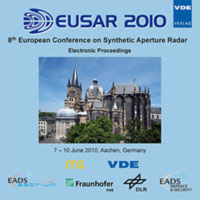3D building reconstruction by exploiting SAR and GIS data
Conference: EUSAR 2010 - 8th European Conference on Synthetic Aperture Radar
06/07/2010 - 06/10/2010 at Aachen, Germany
Proceedings: EUSAR 2010
Pages: 4Language: englishTyp: PDF
Personal VDE Members are entitled to a 10% discount on this title
Authors:
Thiele, Antje; Hinz, Stefan (Karlsruhe Institute of Technology (KIT), Institute of Photogrammetry and Remote Sensing (IPF), Germany)
Thiele, Antje; Cadario, Erich (Fraunhofer Institute of Optronics, System Technologies and Image Exploitation (IOSB), Germany)
Adam, Nico (German Aerospace Center (DLR), Remote Sensing Technology Institute, Germany)
Abstract:
State-of-the-art space-borne high resolution SAR sensors such as TerraSAR-X, SAR-Lupe or Cosmo-SkyMed provide SAR images of 1-3m spatial resolution or even below in special spotlight modes. Due to this high resolution, one major issue of these missions is the development of methods to automatically derive detailed cartographic information from their recorded data by focusing on rural as well as urban areas. Such analysis is especially on demand in case of disasters (e.g., floodings, landslides, or earthquakes), where active SAR systems are highly attractive due to their daytime and weather independency. Thus, the development of automatic methods for damage analysis or - generally - change detection is also an important issue. For such kind of tasks it is advisable to combine existing Geodata with current SAR data. Hence, in this paper an approach for 3D building reconstruction based on multi-temporal information fusion by exploiting GIS and InSAR data is presented. Thereby, GIS data consisting of building footprints are used as initial information. Subsequently, a simulation exploits building hypotheses, which are based on the given 2D footprint and an assumed building height, and provides as result synthetic InSAR phases. The iterative adjustment between simulated and measured real InSAR phases enables the reconstruction of the current building shape. Our approach is tested on single-pass airborne InSAR data.


